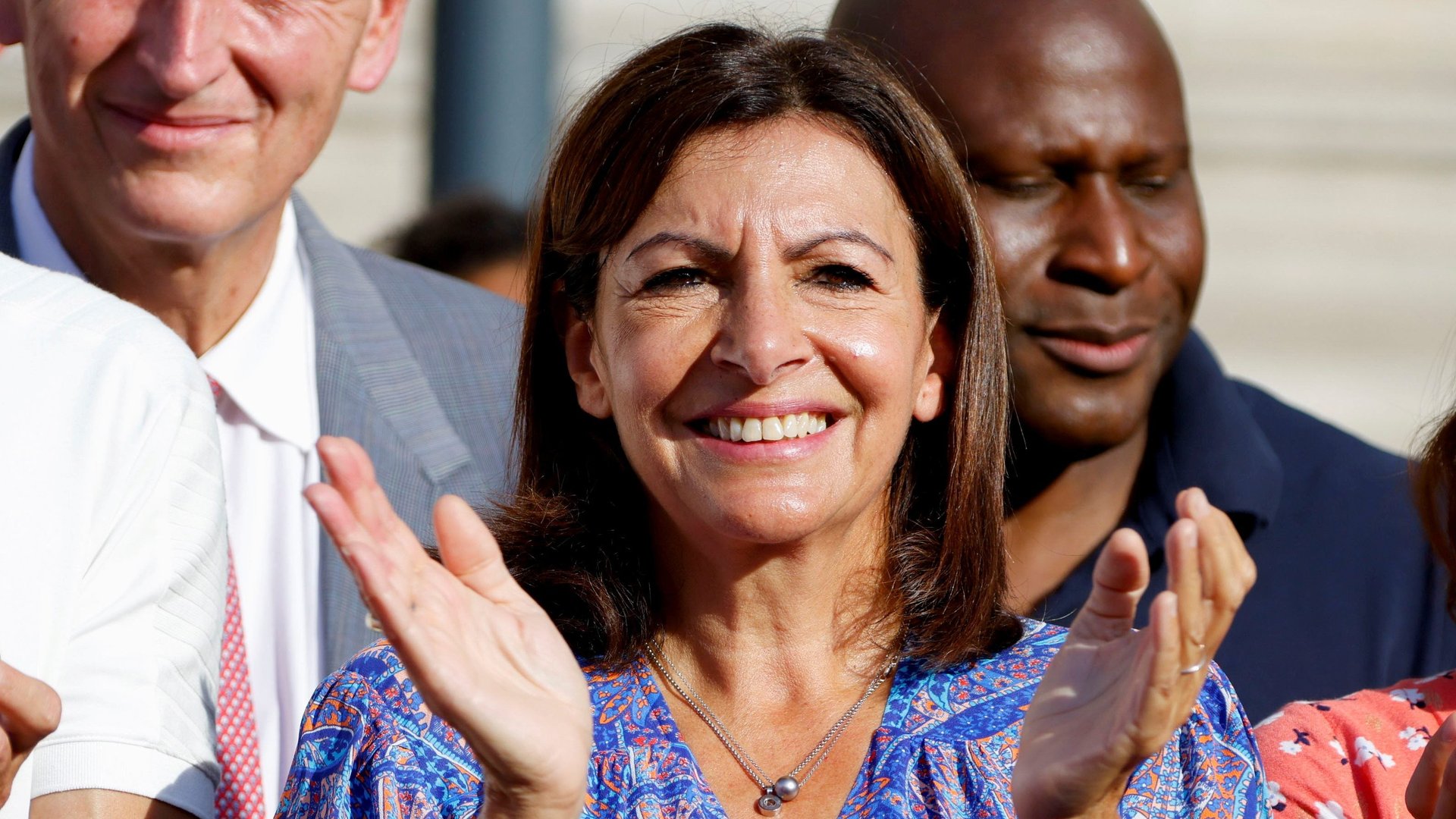Europe’s most famous mayor is running for president
Paris’s first female mayor has set her sights on France’s top job. On Sept. 12, Anne Hidalgo announced her intention to run for president and is now the favored candidate for the Socialist Party.


Paris’s first female mayor has set her sights on France’s top job. On Sept. 12, Anne Hidalgo announced her intention to run for president and is now the favored candidate for the Socialist Party.
Hidalgo has made a name for herself as Paris’s top politician. She has worked to create more affordable housing and led the city through crises like the November 2015 terrorist attacks and Covid-19 pandemic. But it’s her environmental and mobility policies that have distinguished her tenure around the world. Over the last seven years, Hidalgo has transformed the banks of the Seine river into parks, slashed vehicle traffic, promoted cycling, and built up the city’s defenses against climate impacts. The results transformed the streets of the capital: car ownership in Paris is down 20% from 1999, and bike usage has risen 54% between 2018 and 2019 alone, according to the city government.
If victorious, Hidalgo would be one of the most prominent mayors ever to hold a major presidency. While national elections aren’t scheduled until April 2022, the prospect of Hidalgo in national office is already making waves among city planning experts. Her win would have implications not only for France, but for cities around the world that see Hidalgo and Paris as a model. Her leadership as mayor has been defined by the belief that a nation’s cities are crucial to its success, and must change dramatically to adapt to the challenges of climate change. Hidalgo has indicated that she plans to expand on climate policies pioneered in Paris, turning France into a low-carbon economy, while reducing inequality and bridging class divides.
Hidalgo’s plan to make Paris a 15-minute city
Hidalgo’s vision is to make Paris a “15-minute city,” where residents are able to reach most basic needs and desires within 15 minutes by foot, bike, or public transit. While the concept has existed in urban planning for decades, Hidalgo was the first mayor of a major capital to adopt it as a guiding principle for city planning, basing her reelection campaign on it in 2020. After her victory by a 14-point margin in the second round of voting, Hidalgo appointed a deputy mayor to oversee the rollout of the project, and began working to ensure that not only are roads more accessible, but that all parts of the city have easy access to parks, grocery stores, and clinics.
Hidalgo owes her popularity to proposing and executing bold ideas. She promoted pedestrianism and cycling with 1,000 km of new bicycle lanes. With the onset of the pandemic, she created 50 km more of pop-up bike lanes called “coronapistes,” a scheme she now intends to make permanent. In 2016, just two years into her tenure, Hidalgo introduced car-free Sundays on major roads including the Champs-Elyées. More recently, she introduced a city-wide speed limit for cars at 30 kph (18 mph), raised the prices of parking meters, and a proposed a complete ban on cars in the city center by 2022.
The streets of Paris look utterly different than they did even a decade ago, says Brent Toderian, a global consultant in urbanism and city planning based in Vancouver. Hidalgo not only changed the layout of the city, but its culture, he argues. “Paris has become a city of bikes when it really was not [before],” says Toderian.”The most amazing thing isn’t the level of transformation, it’s how quickly it happened. Our primary challenge in city-making, is to go further, faster. That’s exactly what Paris shows us how to do.”
Challenges facing a “madame la présidente”
Hidalgo has already garnered attention on the international stage for her success executing difficult, ambitious projects as mayor. Her challenge as a candidate will be to communicate those accomplishments while appealing to a much broader swathe of voters. Hidalgo follows other mayors who sought national office after making a lasting impact on their city.
In the US, Michael Bloomberg’s 11-year tenure as mayor of New York City marked a new era for the city defined by data-driven decision-making, overhauled city services, and a focus on environmental sustainability. But Bloomberg lost the Democratic primary in the 2020 US presidential race, unable to translate his success as an effective city manager into a presidential campaign despite spending more than $1 billion. He dropped out after just three months.
“One of the reasons mayors have struggled to win national office in the United States is translating the narrative of ‘I picked up the garbage and kept the sidewalks clean’ to a national narrative about ideology,” says architect and urbanist Vishaan Chakrabarti, who served as planning director for Manhattan in New York under Bloomberg.
Hidalgo faces a similarly difficult path to the presidency. Though she is the favored choice to win the nomination of her Socialist Party, she is struggling at the polls. In April, she will face a crowded field likely to include incumbent president Emmanuel Macron, as well as far-right candidate Marine Le Pen, who came in second to Macron running on a nationalist platform in 2017’s presidential election. In early polling, Hidalgo is still near bottom of the pack favored by only 8% of prospective voters.
But Hidalgo has already proven herself to some. Hidalgo won over supporters in Paris with bold climate policies and action on progressive priorities.”She showed the courage and tenacity to get these things done in a big diverse city,” says Chakrabarti. But it also earned her plenty of enmity. As mayor, she was able to take a calculated risk that she could alienate car owners, mostly in less-dense suburbs, and focus on voters in the urban core. This bet paid off in Paris, but won’t be easily replicated when trying to court the entire country.